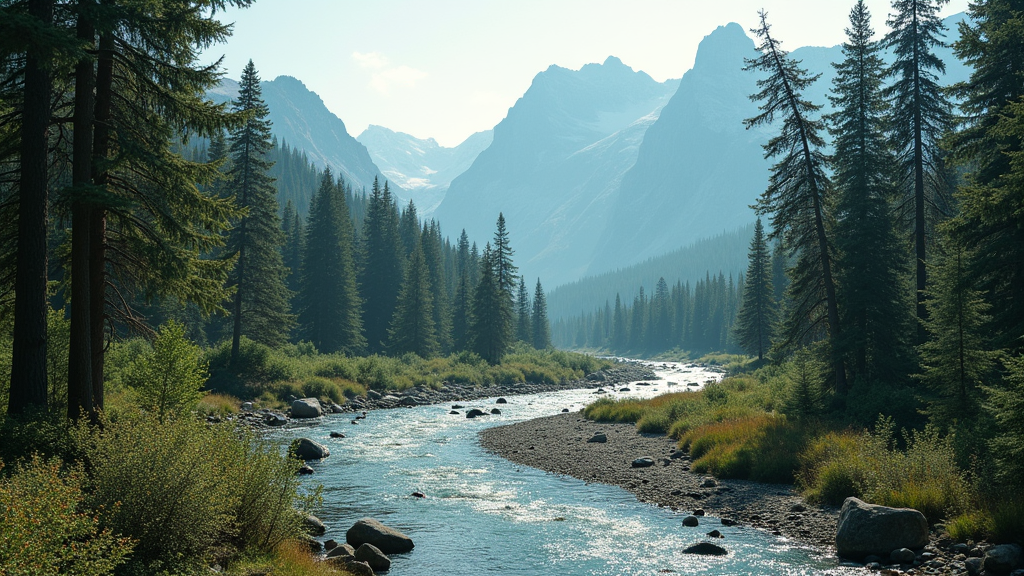Contents
- 1 Step 1: Preparation and Planning
- 2 Step 2: Navigation and Wayfinding
- 3 Step 3: Shelter Building and Survival Skills
- 4 Step 4: Securing Water, Fire, and Food
- 5 Step 5: Mastering First Aid and Basic Wilderness Medical Practices
- 6 Step 6: Wildlife Awareness and Precautions
- 7 Step 7: Staying Consistent and Adapting
- 8 Common Questions & Troubleshooting
- 9 Final Thoughts & Next Steps
Staying safe in the wilderness starts long before you hit the trail. I pack not only the gear I need but also a wealth of knowledge and respect for nature. Whether you are new to the outdoors or have some experience, knowing the safety steps is very important. This guide covers the key topics I have refined over many trips into nature.
QUICK LOOK: How to Stay Safe in the Wilderness
- Preparation & Planning: make sure to pack essential items including a first aid kit, map and compass, GPS or other navigation tools, water purification supplies, fire-starting tools, and my all-in-one survival kit.
- Navigation: I spend time learning to read topographical maps and use a compass so I always know my bearing, even when modern tools fail. I stick to marked trails whenever possible to lower the chances of mishaps
- Shelter & Survival Skills: Being able to set up a shelter quickly is really important when conditions change. A well-chosen shelter can protect you from wind, rain, or cold when the weather turns harsh.
- Water Food Fire: Access to clean water, fire, and food is vital in the wild. I always search for natural water sources like streams or springs and use purification tablets or filters to ensure the water is safe. Fire not only provides warmth but also can serve as a signal for help.
- First Aid Skills: When spending time in remote areas, being ready for minor injuries is essential. I always carry a sturdy first aid kit and have trained in basic procedures such as cleaning wounds, bandaging cuts, and managing sprains.
- Be Aware of Wildlife: Meeting wildlife can be an exciting part of outdoor adventure, but it requires respect and caution. I prepare by checking reports on local animals and learning which species might be encountered.
- Be Adaptable: Even with careful planning, the wilderness can be unpredictable. It is important to stick to safety practices while remaining flexible enough to adjust plans when conditions change.
- Communicate Your Plans: Before leaving home, I plan each trip with care. I map out the route, check weather forecasts, and share my itinerary with someone I trust.
Step 1: Preparation and Planning
Before leaving home, I plan each trip with care. I map out the route, check weather forecasts, and share my itinerary with someone I trust. Researching the terrain and local risks helps me set realistic expectations.
I make sure to pack essential items including a first aid kit, map and compass, GPS or other navigation tools, water purification supplies, fire-starting tools, and my all-in-one survival kit. Adjusting clothing and footwear to the weather and landscape ensures I stay safe and comfortable throughout the outing.
Getting off track can quickly turn a pleasant hike into a risky situation. I spend time learning to read topographical maps and use a compass so I always know my bearing, even when modern tools fail. I stick to marked trails whenever possible to lower the chances of mishaps.
When venturing off the beaten path, I do so only if I have the advanced skills and proper equipment. Natural landmarks such as distinctive rock formations or streams serve as useful guides to help me reorient if I stray from the planned course.
Step 3: Shelter Building and Survival Skills
Being able to set up a shelter quickly is really important when conditions change. A well-chosen shelter can protect you from wind, rain, or cold when the weather turns harsh. I look for dry, level spots that naturally shield you from the elements and avoid areas prone to flooding.
Over time, I have practiced several designs—ranging from simple lean-tos to more secure constructions using branches and tarps. Even a temporary shelter can make a big difference, providing safety and comfort in challenging situations.
You should also take the time to learn basic survival signaling skills. In case of emergency, you need to be able to signal for help when you’re in the wilderness out of the reach of modern cell phones.
Step 4: Securing Water, Fire, and Food

Access to clean water, fire, and food is vital in the wild. I always search for natural water sources like streams or springs and use purification tablets or filters to ensure the water is safe. Fire not only provides warmth but also can serve as a signal for help.
I choose a safe, open spot for a fire, clear of overhanging branches and dry leaves, and I practice different methods to start one when needed. Foraging for edible plants and storing food securely are parts of my routine; keeping food away from the sleeping area helps prevent unwanted animal encounters.
Step 5: Mastering First Aid and Basic Wilderness Medical Practices
When spending time in remote areas, being ready for minor injuries is essential. I always carry a sturdy first aid kit and have trained in basic procedures such as cleaning wounds, bandaging cuts, and managing sprains.
I have also taken wilderness first aid courses to know what to do if a situation goes beyond simple treatment. Keeping calm and clear-headed under pressure enables me to care for myself and assist any travel companions who might get hurt.
Step 6: Wildlife Awareness and Precautions
Meeting wildlife can be an exciting part of outdoor adventure, but it requires respect and caution. I prepare by checking reports on local animals and learning which species might be encountered. This information guides how I manage my food and plan my route.
For example, storing food in bear-resistant containers or hanging it from a tree minimizes risk. I also make gentle noise while hiking so that animals are alerted to my presence, reducing the chance of a sudden encounter. If I do come face-to-face with wildlife, I slowly back away to maintain a safe distance without causing stress to the animal.
Step 7: Staying Consistent and Adapting
Even with careful planning, the wilderness can be unpredictable. It is important to stick to safety practices while remaining flexible enough to adjust plans when conditions change. I routinely check my gear and review my strategies during a trip to ensure everything is in order.
Keeping a simple log of what works and what needs change helps me improve future trips. Staying updated on weather changes and local conditions lets me switch up plans quickly, ensuring that I am prepared no matter what surprises nature may throw my way.
Common Questions & Troubleshooting
If you find yourself off the track in the wilderness, stop and look around for familiar landmarks. Use your map and compass to identify your position, and consider retracing your steps rather than taking an uncertain shortcut.
In sudden weather changes, extra layers and waterproof gear can be lifesavers, and a quick shelter setup can make a big difference. If you encounter aggressive wildlife, keep a safe distance, secure your food, and make your presence known calmly. Knowing your escape routes and staying composed is key to handling unexpected situations.
Final Thoughts & Next Steps
Every trip into the wilderness offers lessons that help level up your outdoor skills. I see each excursion as a chance to grow in confidence and practical know-how. My simple action plan is to thoroughly research the destination, inform a trusted person of your plans, sharpen your map and compass skills, pack the right gear including an all-in-one survival kit, and learn basic first aid.
Respect for local wildlife through safe food storage and careful behavior goes a long way in ensuring a smooth experience. With time, these habits become a routine that makes every adventure safer and more enjoyable. What new safety measures will you add to your plan on your next trip?
Check Out Our Most Recent Articles:
- Complete Guide On Tracking Game Animals

- DIY 4-Step Guide To Field Dressing And Quartering A Deer

- Night Vision Binoculars For Nocturnal Hunting

- The Science Behind Camouflage Patterns For Deer Hunting

- Binocular Accessories For Hunters

- 9 Tips for Using Trail Cameras To Track Deer Movements

As always, stay safe, enjoy the journey and please try to leave it cleaner than you found it. If you have any comments, questions, ideas, or suggestions please leave them in the comment section below and I’ll get back to you ASAP. You can follow us on YouTube: Man Art Creations for videos of our DIY Adventures.
P.S. – Thanks so much for checking out our blog we really appreciate it. Just so you know, we may receive a commission if you click on some of the links that appear on our site. This helps us keep our content free and up-to-date for everyone. We appreciate your support!



